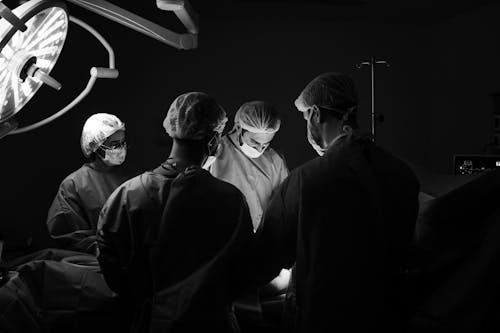Innovations in Suture Technology: Exploring the Latest Breakthroughs

Medical advancements have always been at the forefront of human progress, aiming to improve patient outcomes and revolutionize the healthcare industry. One area that has seen significant innovations over the years is suture technology, which plays a crucial role in wound closure and tissue repair. In this blog post, we will delve into the latest breakthroughs in suture technology, exploring how these innovations are changing the landscape of surgical procedures and patient recovery.
1. Absorbable Sutures: Prolonged Biodegradation
Traditionally, sutures required a follow-up procedure for removal, which could be uncomfortable and sometimes lead to complications. However, recent breakthroughs in suture technology have given rise to absorbable sutures that gradually break down in the body over time. These sutures are made from biodegradable materials like polyglycolic acid (PGA) and polylactic acid (PLA), which offer adequate tensile strength for wound closure while reducing the need for suture removal. Surgeons can now select sutures with varying rates of biodegradation, tailored to specific healing times, significantly improving patient comfort and outcomes.
2. Antibacterial Sutures: Fighting Infections from Within
Infections pose a significant risk after surgery and can hinder the healing process. To address this challenge, researchers have developed antibacterial sutures. These innovative sutures are coated with antimicrobial agents, such as chlorhexidine or triclosan, which actively fight bacteria at the incision site. By reducing the risk of infection, antibacterial sutures promote faster healing and minimize the need for postoperative antibiotics, benefiting both patients and healthcare systems.
3. Flexible Sutures: Enhancing Wound Closure Precision
Conventional sutures can sometimes exert excessive force on delicate tissues, leading to tissue damage or impaired wound healing. However, flexible sutures, made from materials like elastomers, have emerged to overcome this limitation. These sutures offer enhanced flexibility, conforming to the natural movements of the body without compromising wound closure integrity. Surgeons can now achieve more precise stitching, particularly in challenging anatomical areas, resulting in improved cosmesis and reduced postoperative complications.
4. Smart Sutures: Monitoring Wound Healing in Real-time
The advent of smart technology has extended its reach to suture innovation. Smart sutures embedded with microsensors can provide real-time data on the wound’s healing progress. These sensors can measure parameters such as pH levels, temperature, and tensile strength at the wound site, enabling healthcare professionals to monitor the healing process closely. This data-driven approach allows for early detection of potential complications and ensures timely intervention, ultimately improving patient outcomes and reducing healthcare costs.
5. 3D-Printed Sutures: Tailored Solutions for Complex Surgeries
3D printing has disrupted various industries, and suture technology is no exception. Surgeons can now customize 3D-printed sutures to fit the specific needs of complex surgical procedures. These sutures can be designed with varying textures, shapes, and materials, ensuring optimal wound closure and support. Moreover, the ability to produce patient-specific sutures opens new doors for personalized medicine and precise surgical interventions.
![]() Conclusion
Conclusion
Innovations in suture technology have come a long way, transforming the landscape of surgical procedures and patient care. From absorbable and antibacterial sutures to smart and 3D-printed options, these breakthroughs have paved the way for enhanced wound closure, reduced complications, and faster recoveries. As technology continues to evolve, we can expect even more remarkable advancements in suture technology, further solidifying its vital role in modern medicine. Surgeons and researchers alike are continuously striving to push the boundaries, ultimately leading to safer, more effective surgical interventions for the benefit of patients worldwide.
